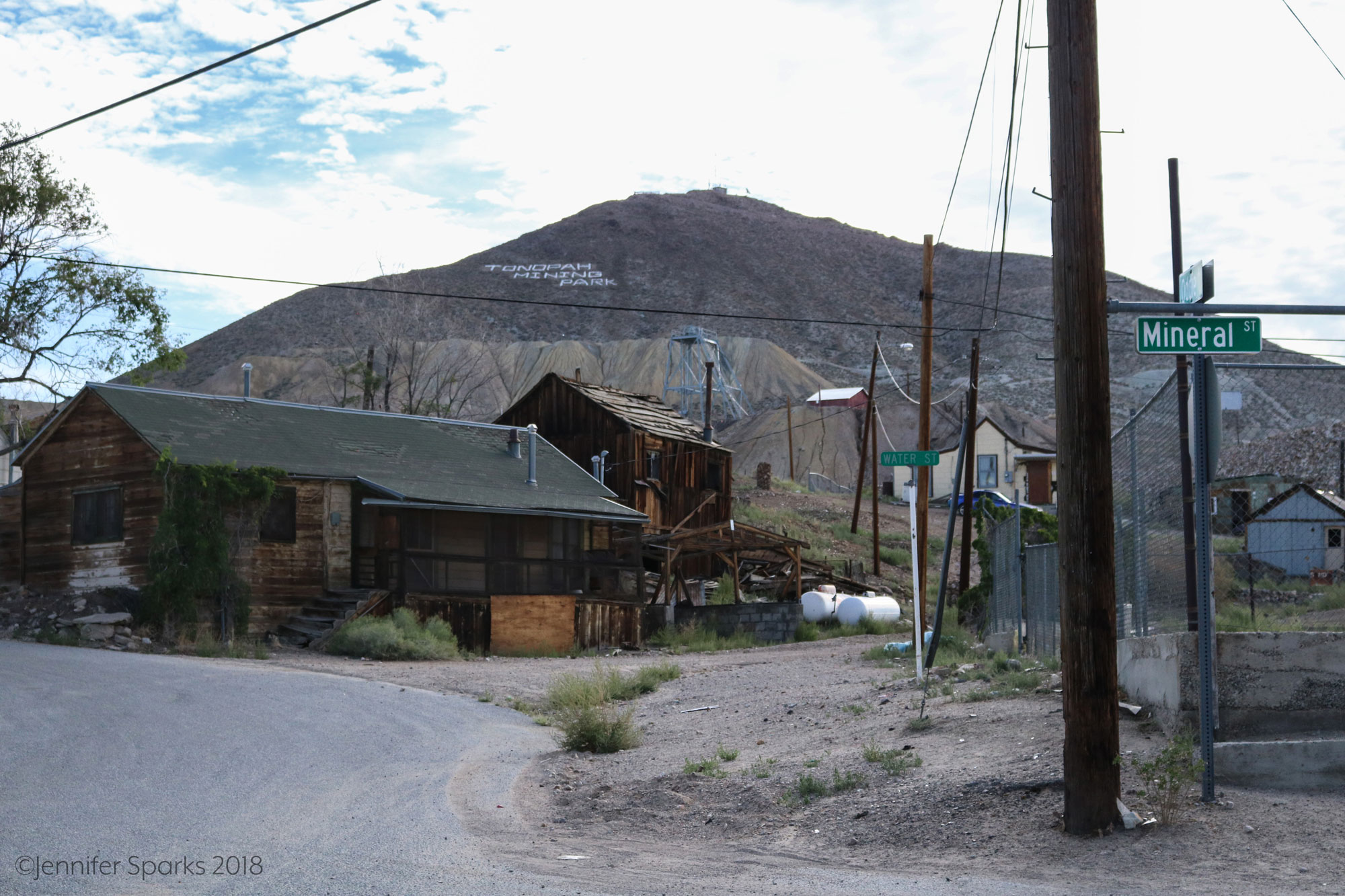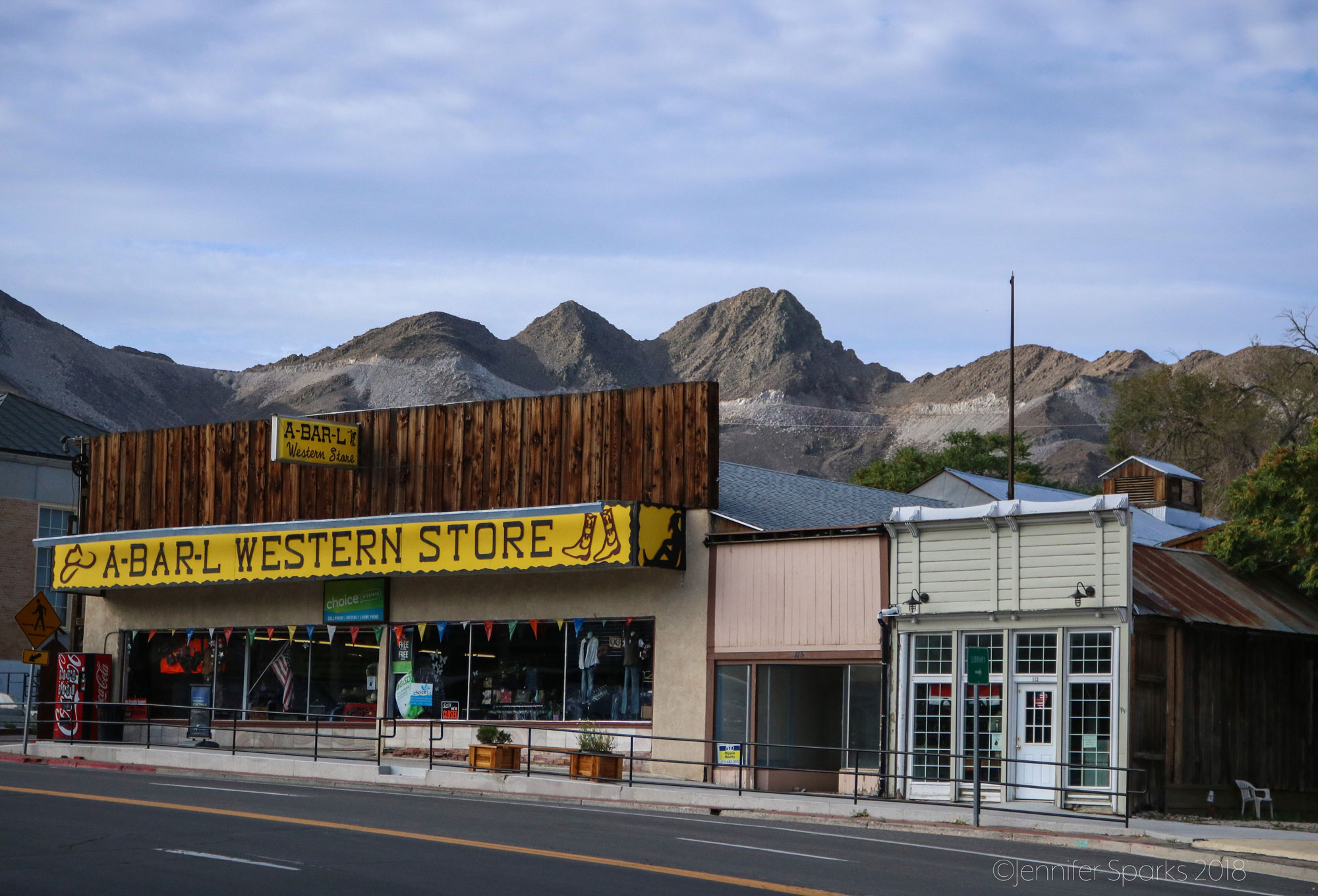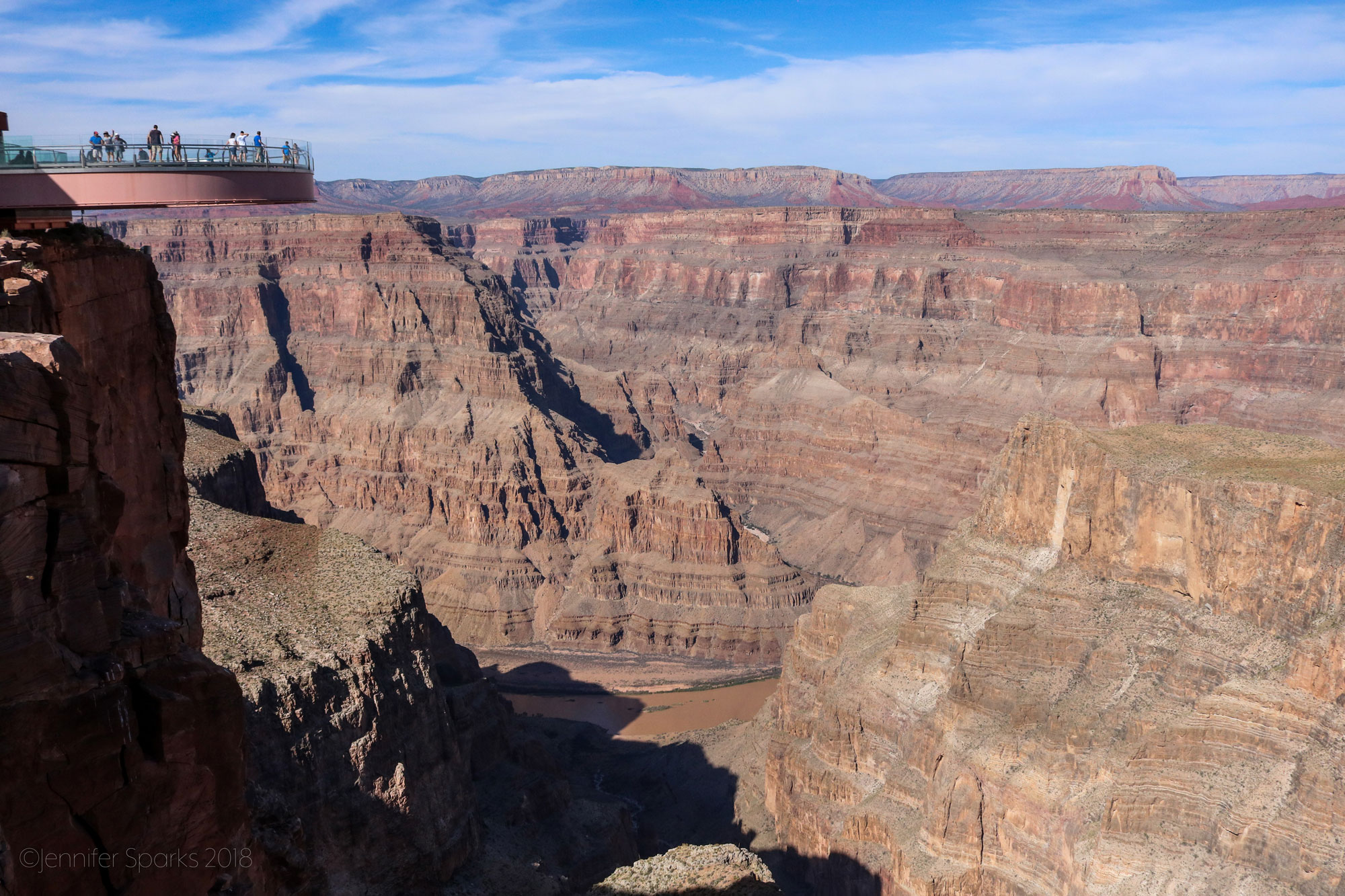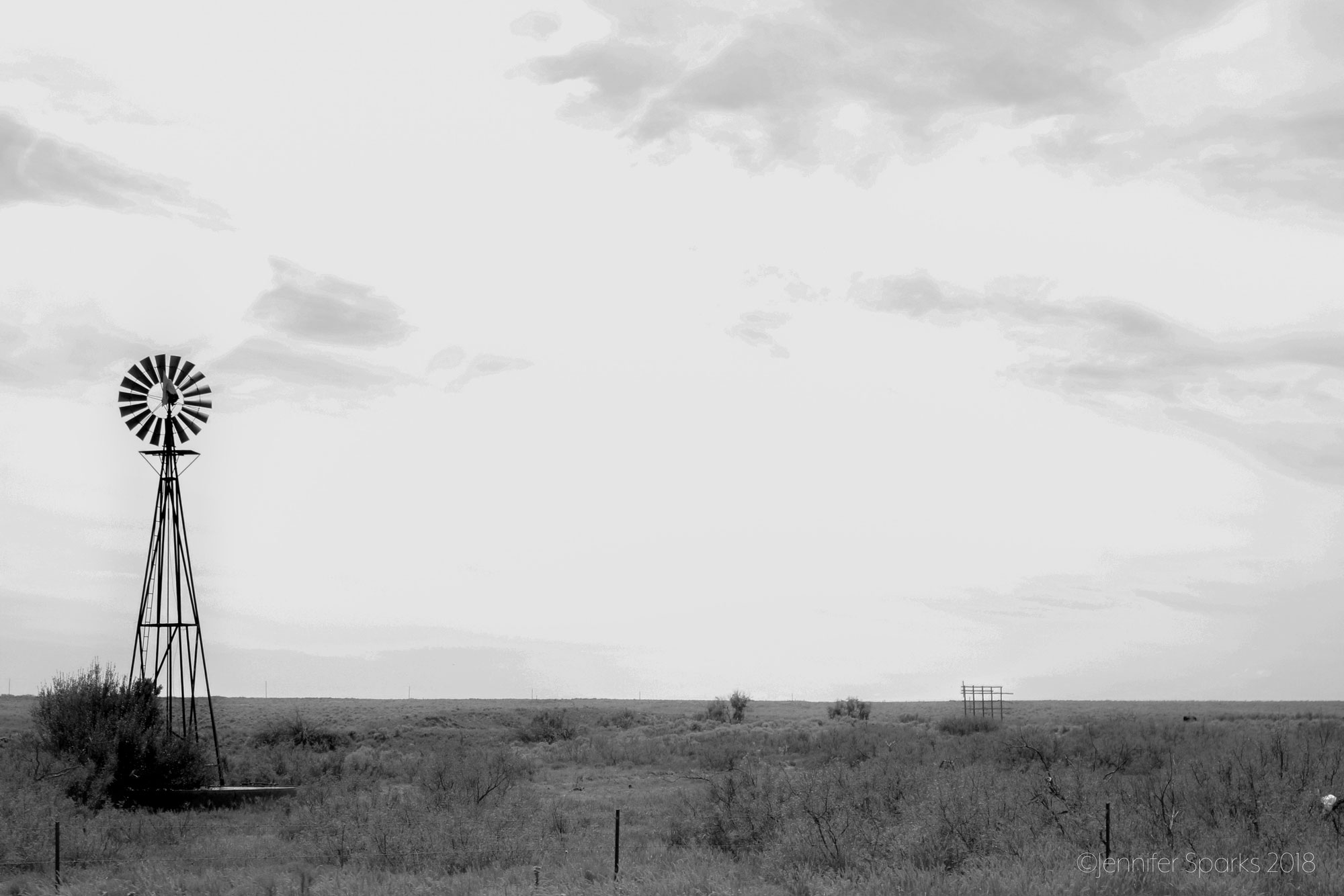
Gone to look for America
Two Democrats and a UHaul named Slim adventure across the heartland of the USA.
Driving from Washington State to Massachusetts via the Grand Canyon, Texas, Louisiana, Tennessee and West Virginia (to name a few states), it was a chance to leave the coastal bubble and reconnect to my own country after nearly a decade overseas.
We spent so much time on the road in very rural areas that people are few and far between. That is reflected in these pictures—the vast open spaces and dramatic landscapes that dominate the interior of the country sometimes feel like they dwarf human relationships.
It was too quick of a trip to do any in-depth exploration. These photos serve as a primer of some of the themes and questions of an American looking for and at her country.

A starting point
Beginning the nearly 4,500 mile (7,200 km) trip near Washington’s state capitol of Olympia, we gas Slim the UHaul up and finalize preparations. We have an ambitious driving schedule that demands we make it to the middle of Nevada by the end of day 1. This means driving south across half of Washington, diagonally across Oregon, and through the better part of Nevada to Tonapah, home of Area 51.
There is nothing in eastern Oregon to see, and nowhere to stop. Gas is precious.

Welcome to Nevada
We arrive at the Oregon/Nevada in the early evening after hundreds of miles of nothingness. Small towns are few and far between, and often have eccentric shops or homes like this one covered in pilfered road signs. Despite the traffic chaos that the signs imply, the roads are ruler-straight and largely empty.
As night falls, distances take on an odd, preternatural quality. With no reference points—no lights, towns or traffic, we feel like the only people in the world. We’re depending on Slim to get us to Tonapah without hitting a coyote or antelope. We see jackrabbits skittering across the road, their eyes illuminated only when we are within feet of each other.
80 miles feels like 800, and we finally see lights in the distance. For a few freaky moments our imaginations take over as the lights never seem to get closer. We believe every alien tale we ever heard.
Eventually a semi-truck passes and we are plunged back into the dark. Somehow that unknown seems more manageable than the mind-bending pin-pricks of light that the truck had beamed at us.

Respite
After a 15 hour day of driving, we pull into the Mizpah Hotel at midnight. A historic old hotel, it smacks heavily of the old Wild West. The floors pitch at such a steep angle that it feels like an uphill hike to the bathroom. Fallen shampoo rolls away, possibly to California, and is never seen again.

Luckless
We arrive so late and leave so early that the slot machines are never turned on. Pity. The only thing I wanted to do in Nevada was play the one-armed bandit.
The wall paper is steam-punk fire, though, and I covet it.

Mineral Street
Tonapah is known for three things 1) aliens, 2) military bases (read, Area 51 facilities) and 3) mining.
What is not targeted at alien tourists is directed towards drawing attention to the more terrestrial pursuit of resources. Mining brings money in when the aliens are out of season.

Identity consumerism
This institution is not to be confused with an Eastern store. Peddling the gear needed in a rural desert landscape, this store assuages the desires of tourists who want to play cowboy, and locals who have work to do.

Shopping
With no big box stores around, the mercantile offers an array of goods, general store style.

Stranger than fiction
If Nevada hasn’t been Nevada, what has it been?
It was only after our road trip that we fully appreciated how bizarre this sign was, when we came across the New York Times headline “Dead Pimp Cruises to Victory in Nevada State Election.”
That being said, it was a stark reminder of the coast/rural divide in the USA. How constituents of Nevada have a very different set of daily needs than I do. Economic realities in the form of water rights, subsidies and taxes play a very different role in the hierarchy of needs vis a vis social concerns incubated in the cities. This is not to say one need is greater than another—just that it was a good perspective recalibration.

Walking in the sky
The day starts early with a trek across the remainder of Nevada. Gassing up in Las Vegas, we saw more police in a three block span off the Strip than we did the rest of the trip combined.
Brandishing a burger in one hand and steering Slim with the other, I beat a hasty exit to Arizona, aiming for the south rim of the Grand Canyon and the skywalk on the Hualapai reservation.
The drive through the reservation was a reminder of the economic inequality faced by our native populations. The Skywalk is on reservation land, meaning that the profits do not go to the park service. It seems that everyone does not benefit from equally, though. The road needed maintenance, as did many of the cars and homes.
Tourists are not allowed to take photos once on the Skywalk—there are local photographers who take all the pictures. It is also not a place for anyone who does not like heights. This may seem self evident, but as we tried to head out to the platform, our way was blocked by a woman who was staring out over the vista. “Are you in line?” we asked. “No. I have a ticket, but…I just can’t go out there. Nope. Not doing it.” We solemnly agreed it was more than slightly unnerving as she moved aside for us and we took our first steps onto the glass, thousands of feet above the canyon floor.


Joshua
Joshua trees bid farewell to the sun as we do to Arizona. It’s on to New Mexico.

Albuquerque
It was hard to get to Albuquerque.
We’d plotted a route that would take us through the Petrified Forest in eastern Arizona and right on in to Albuquerque. I’d gotten it into my head that I wanted to take the Sandia Tramway up over the city to see the sunset.
We got sidetracked going to see the meteor crater outside Winslow, AZ. It’s impressive if you like space things that make big holes in deserts. Google Maps seemed to indicate a big slowdown just over the New Mexico line. With several hours of driving in Arizona to go, we weren’t worried.
Coming to the state line, it was apparent that the slowdown wasn’t clearing. We also came to the realization that we had not taken into account that Arizona does its own thing with time zones, and that we were going to change to Mountain Time crossing into New Mexico. These two events took almost three hours out of the afternoon’s plan. Petrified Forest was scratched, and it was my turn to see just how fast a UHaul can haul.
Turns out, there’s a cap at 75 MPH, but if you get going on a downhill you can eke out a little extra speed. Some fast Google Mapping yielded a long, but somehow equally fast detour that would keep us moving around the back-up.
Slim took us past a school for learning how to ride a bucking bronco, and some of the loveliest, painted hills in the west. Our detour took us right to the beginning of the slowdown, and we got on an empty highway. The mind boggled as we passed a line of semi-trucks interspersed with cars stretching to the horizon.
We were due to arrive at the Tramway at 7:25 with sunset at 7:36. We careened into the parking lot and tumbled out, cramped and lacking blood flow to lower extremities. Racing up the steps to the ticket office, we hopped on just in time to get a spectacular view of the last of the sun setting while a thunderstorm rolled across the plains. Giddy to have made it, we rewarded ourselves with tacos and massive margaritas.
Our honor as Washingtonians was impugned when the waiter asked if we wanted our food spicy. “How spicy is spicy?” “Where are you guys from?” “Washington.” “Eh, maybe you shouldn’t have the spicy.” “Hey! We’ll do it.” It was not that spicy.
At the hotel, we flipped on the local news and found out that the slowdown on the highway had been caused by a semi truck colliding with a Greyhound bus, killing 8 people. May they rest in peace.

Early reminders
In a suburb of Albuquerque lies Petroglyphs National Monument. It’s free to enter, and the intrepid visitor can trek through spring wildflowers and boulder scramble up small rises to see ancient rock drawings.
Their exact meanings are unclear, as the local Native American tribes consider the site to have significant spiritual meaning, and hold the symbols as privileged information.

Do you know the way to Amarillo?
As soon as we left Albuquerque, a massive BBQ lunch in Amarillo was on our radar. That’s all I wanted out of Texas, which is good, because the panhandle is not a pretty place.
Tyler’s came through in spades. Down home and delicious, it was everything I’d been imagining since leaving Washington. Tyler endeared himself to us by having a good lay of the land of the Pacific NW, having participated in a BBQ tour that took him to the Tacoma Dome and beyond.
Both Tyler and his food have it going on. Maybe that’s the solution to political division? Just get everyone together over BBQ. Hard to take anyone too seriously if they’re covered in sauce.

Isolation
East Texas is sparsely populated. It’s hot, it’s muggy, and I would imagine it’s fairly hard living.
On a superficial level, I could not find much resonance between this area of the country and my own. It seemed far away geographically, economically, idealistically. I want to know more.
What is our common ground? Is this the guiding experience of America? Am I the odd one out?

The party never stops
Driving into Shreveport was an exercise in economic segregation. We drove through some neighborhoods where the people on the street were exclusively white. Other neighborhoods seemed to house exclusively people of color.
At a stoplight, movement out the window caught my eye. I turned to see this tree bedecked with Mardi Gras beads, lending a festival atmosphere nearly half a year after the holiday.
Pulling up to Marilynn’s, where we’d decided to try Po Boys and beignets (both delicious—I would go so far as to say the beignets were transcendent pillows of confectioner sugar covered happiness, and a massive check off the bucket list), it immediately became clear that we were in the white part of town.
The entirety of the clientele and the waitstaff were white. In low voices over our sandwiches, we hypothesized that there was probably a mirror establishment that is entirely a space for people of color. Google told us that the food was good, not that we would be participating in ongoing racial separation.
What does it mean to travel responsibly and avoid reinforcing divisions? Without local knowledge and context, how does a visitor navigate complex race relations?

Omens
Crossing the Mississippi River into the eponymous state looked like we were heading to our doom.
It felt like it too as torrential rains gave Slim the first power wash since we picked it up.

I'm going to Jackson
I was really ready to like Jackson.
I did not like Jackson. It’s not entirely the city’s fault. We rolled in late afternoon on the Sunday of Labor Day weekend, so a lot was closed. It was also hot and humid in that wet-towel-in-a-sauna way the south has.
The Civil Rights Museum was closed, as was the art museum. We tried really hard to patronize Cathead Distillery, but they couldn’t be bothered to let us taste their goods (“You have to take a tour.” “We don’t want to take a tour. We know how alcohol is made. We’re just passing through and wanted to taste, maybe buy a couple of bottles.” “You can only sample if you take the tour.” “But…we’re walk-in customers. We don’t have time to take a tour. We just want to taste before we invest.” “You can go to any restaurant in town and order a cocktail with our alcohol. Here, you can only taste if…” I don’t know what he said next. I walked out the door, very displeased and sans alcohol).
Mississippi was the last state to repeal Prohibition in 1966, and we were ready to help them celebrate. No. So off down the really badly pot-holed roads we went, aiming towards Tuscaloosa, Alabama.

Not your average moonshiners
Having turned Slim north after the difficulties of the Deep South, we blotted out our sorrows with sweet tea and fried chicken from Gus’s in Chattanooga, Tennessee.
Back on the highway, a massive billboard advertised Thunder Road Distillery, and we were more than happy to make a stop.
“Do you do samples?” we inquired of a man who looked very much like one of the original Hatfield/McCoy clatch. He gave us a stack of ten half-shot glasses and said, “Yup.” He poured us samples, and took one for himself for good measure with each pour. If he works an eight hour shift and ends it on his feet, he has my undying respect/concern for his liver.
With whiskey and moonshine (corn liquor) it was a good sampler, though the flavors (watermelon? s’mores?) were a big step off the traditional distilling path.
We had to down quite a bit of water and walk around Slim a few times before getting back behind the wheel.